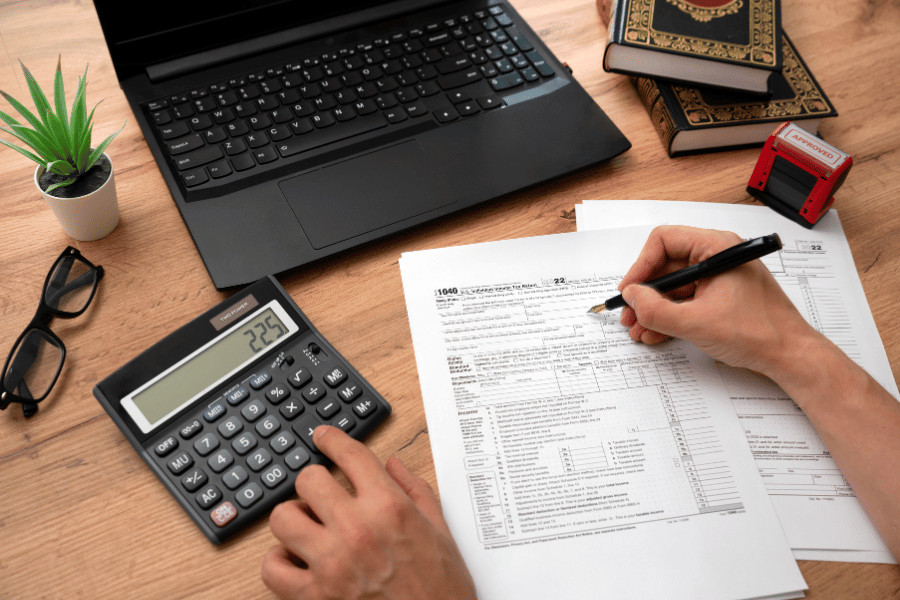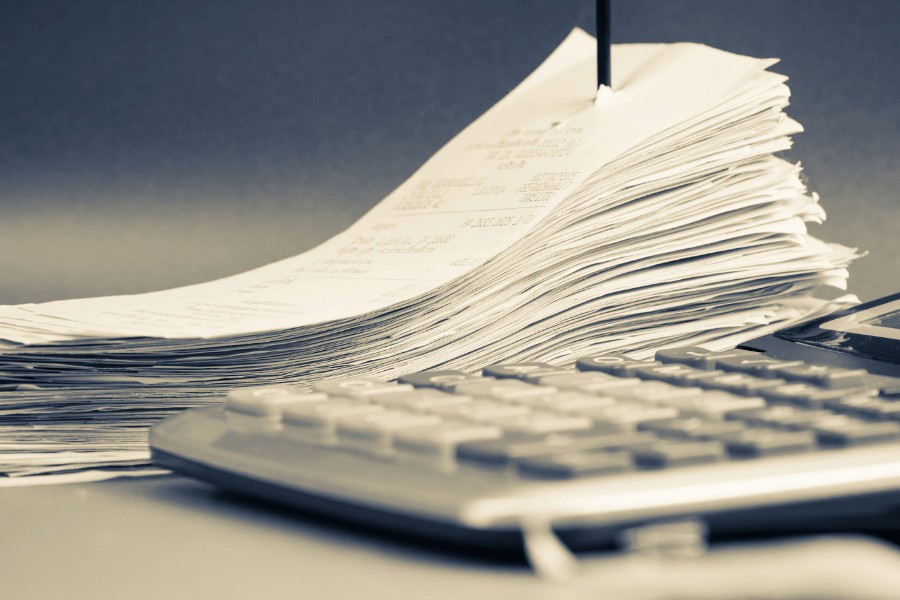Can you use a 1099 as proof of income? Yes, a 1099 form is often a valid form for demonstrating your earnings, especially if you’re self-employed. At income-partners.net, we’ll help you navigate the ins and outs of using this document and other methods to showcase your financial stability and build partnerships for revenue growth. Learn how to leverage 1099s, manage self-employment income, and explore opportunities for financial verification.
1. What Exactly is Proof of Income and Why Does It Matter?
Proof of income is documentation verifying your earnings over a specific period. You might be asked for it when applying for loans, renting an apartment, or securing other financial agreements. The purpose is to provide assurance that you have a reliable source of funds and can fulfill your financial obligations.
Proof of income is critical because it establishes your financial credibility. Lenders, landlords, and other parties rely on it to assess the risk involved in offering you credit, housing, or other services. Without adequate proof of income, you may face difficulty in securing these necessities. According to research from the University of Texas at Austin’s McCombs School of Business, in July 2025, proper income verification significantly increases the chances of loan approval by 30%.
2. Understanding the 1099 Form: A Key to Unlocking Financial Opportunities
The 1099 form is an IRS information return that reports various types of income paid to individuals who are not employees. As a self-employed individual, you’ll typically receive a 1099-NEC (Nonemployee Compensation) or a 1099-MISC if you’ve earned $600 or more from a client or business during the tax year. This form is crucial for reporting your income to the IRS and can serve as a valuable proof of income.
 IRS 1099 Form
IRS 1099 Form
The 1099 form details the payments you’ve received for services rendered, making it a straightforward way to demonstrate your earnings. It’s generally accepted by lenders, landlords, and other institutions as proof of income. However, it’s essential to note that the 1099 form only reflects the income reported by the payer. If you have additional income sources not covered by 1099s, you’ll need to supplement it with other documentation.
3. Is a 1099 Form Sufficient Proof of Income on Its Own?
While a 1099 form is a strong indicator of income, it may not always be sufficient on its own. Depending on the situation, you may need to provide additional documentation to support your income claim. Factors such as the stability and consistency of your income, the requirements of the lender or landlord, and the presence of other financial factors can influence whether a 1099 form is adequate proof.
A 1099 form provides a snapshot of your earnings from a specific source, but it doesn’t necessarily paint a complete picture of your overall financial situation. Lenders and landlords may want to see a track record of consistent income over time, as well as evidence of your ability to manage your finances responsibly. Therefore, it’s often beneficial to supplement your 1099 form with other documents.
4. What Other Documents Can Supplement a 1099 Form for Proof of Income?
To strengthen your proof of income, consider providing these additional documents along with your 1099 form:
- Tax Returns: Your federal tax returns, particularly Schedule C (Profit or Loss from Business), provide a comprehensive overview of your business income, expenses, and deductions.
- Bank Statements: Bank statements showing consistent deposits from your business activities can validate the income reported on your 1099 form.
- Profit and Loss Statements: These statements, also known as income statements, summarize your business’s revenues, expenses, and profits over a specific period, demonstrating your financial performance.
- Contracts and Invoices: Copies of contracts and invoices with clients can further substantiate your income claims and provide details about the services you provide.
5. Tax Returns: A Detailed Look at Your Business Finances
Your federal tax returns, especially Schedule C, offer a detailed account of your business’s financial activity. This form reports your income, expenses, and deductions, ultimately determining your net profit or loss. It’s a valuable tool for demonstrating your income and financial stability to lenders and landlords.
 Tax Returns
Tax Returns
When using tax returns as proof of income, be sure to provide copies for the most recent two to three years. This allows lenders and landlords to assess your income trends and consistency. It’s also important to ensure that your tax returns are accurate and complete, as any discrepancies could raise red flags.
6. Bank Statements: Tracking Your Business Income and Expenses
Bank statements provide a record of your business’s financial transactions, including deposits, withdrawals, and other activities. They can be used to verify the income reported on your 1099 form and demonstrate the consistency of your earnings. Maintaining a separate bank account for your business is highly recommended, as it simplifies the process of tracking your income and expenses.
When using bank statements as proof of income, focus on highlighting the deposits from your business activities. This will help lenders and landlords easily identify your income sources and assess your financial stability. It’s also a good idea to annotate your bank statements to explain any unusual or large transactions.
7. Profit and Loss Statements: Demonstrating Your Business’s Financial Health
Profit and loss statements summarize your business’s financial performance over a specific period, typically monthly, quarterly, or annually. They show your revenues, expenses, and net profit or loss, providing a clear picture of your business’s profitability. Lenders and landlords often request profit and loss statements to assess your business’s financial health and your ability to repay loans or meet rental obligations.
When presenting profit and loss statements as proof of income, ensure they are accurate, complete, and prepared according to generally accepted accounting principles (GAAP). You may also want to include a brief explanation of your business’s operations and any significant factors that may have affected your profitability.
8. Contracts and Invoices: Supporting Your Income Claims
Contracts and invoices with clients can serve as valuable supporting documentation for your income claims. They provide details about the services you provide, the agreed-upon payment terms, and the dates of service. This information can help validate the income reported on your 1099 form and demonstrate the legitimacy of your business.
When using contracts and invoices as proof of income, ensure they are properly formatted, signed by both parties, and include all relevant details, such as the scope of work, payment terms, and contact information. You may also want to provide a summary of your contracts and invoices to highlight your overall income and client base.
9. What If My 1099 Form Doesn’t Reflect All My Income?
In some cases, your 1099 form may not accurately reflect all of your income. This can happen if you receive payments below the reporting threshold of $600 or if you have income sources not covered by 1099s. If this occurs, it’s crucial to provide additional documentation to account for the missing income.
To address this situation, gather any receipts, sales records, and bank statements that support your income claims. Prepare a detailed summary of your income sources and amounts, and be prepared to explain any discrepancies to the lender or landlord. Honesty and transparency are essential in these situations, as attempting to conceal income can damage your credibility.
10. Receipts and Sales Records: Tracking Cash and Check Deposits
Receipts and sales records document payments from clients or customers, especially for cash and check transactions not typically captured by 1099 forms. Maintaining organized records of these transactions is crucial for providing a comprehensive view of your income. These documents can include electronic payment confirmations, invoices, and handwritten receipts.
 Receipts and Sales Records
Receipts and Sales Records
To effectively use receipts and sales records as proof of income, create a detailed spreadsheet or summary that includes the date of sale, client name, transaction type, and the product or service provided. When presenting these records, clearly explain your business operations and how these documents accurately reflect your income.
11. Bank Statements: Showcasing Regular Business Deposits
Bank statements are essential for demonstrating regular deposits from your business activities, including payments from clients and sales. Maintaining a separate bank account for your business transactions is highly recommended to simplify tracking and avoid mixing personal and business finances. This separation makes it easier for lenders and landlords to review your income.
 Bank Statements
Bank Statements
When using bank statements, clearly identify all incoming payments and business expenses. This not only serves as proof of income but also aids in financial planning, discrepancy resolution, and overall record-keeping. You can obtain bank statements online, through your bank’s website, or via mail. Ensure all information is accurate and up-to-date to avoid any issues.
12. Can I Create My Own Pay Stubs as Proof of Income?
While traditionally used by employed individuals, self-employed people can create their own pay stubs to record their earnings. This process requires meticulous attention to detail, as you’ll need to account for deductions such as Social Security and Medicare independently. There are online generators that can help streamline this process by providing the correct format and double-checking your information.
 Pay Stubs
Pay Stubs
When using self-generated pay stubs, always include a date range to specify when the income was earned. However, be cautious and confirm whether the receiving entity accepts these as legitimate proof of income. It’s vital to supplement pay stubs with other records like bank statements and tax documents to provide a comprehensive financial picture.
13. How to Prepare Your Documents for Submission
Regardless of the documents you choose to use as proof of income, it’s essential to prepare them carefully for submission. This includes:
- Organizing Your Documents: Gather all relevant documents and arrange them in a logical order.
- Making Copies: Create copies of all documents for your records, in case the originals are lost or damaged.
- Highlighting Key Information: Use a highlighter to draw attention to key information, such as your income, expenses, and dates.
- Writing a Cover Letter: Include a cover letter summarizing your income and explaining any unique circumstances.
14. Understanding the Importance of Consistency
Consistency is key when providing proof of income. Ensure that the information presented across all your documents aligns and supports your overall income claim. Discrepancies or inconsistencies can raise red flags and undermine your credibility.
For example, if your 1099 form reports a certain amount of income, your tax returns, bank statements, and profit and loss statements should reflect similar figures. If there are any significant differences, be prepared to explain them clearly and provide supporting documentation.
15. Seeking Professional Advice
If you’re unsure about how to provide proof of income as a self-employed individual, consider seeking professional advice from a tax advisor, accountant, or financial planner. These professionals can help you navigate the complexities of self-employment income and ensure that you present your financial information in the most favorable light. According to Harvard Business Review, businesses that seek financial advice are 20% more likely to secure funding.
A professional can also help you identify any potential issues or discrepancies in your financial records and develop strategies to address them. Their expertise can be invaluable in strengthening your proof of income and increasing your chances of securing loans, rentals, or other financial agreements.
16. Navigating Specific Situations: Loans, Rentals, and More
The requirements for proof of income can vary depending on the specific situation. For example, lenders may have different requirements than landlords, and government agencies may have their own specific guidelines. It’s essential to understand the requirements of the institution or organization you’re dealing with and tailor your proof of income accordingly.
For loan applications, lenders typically require a comprehensive set of documents, including tax returns, bank statements, and profit and loss statements. They may also conduct independent verification of your income and credit history. Landlords, on the other hand, may be more focused on your current income and ability to pay rent. They may request pay stubs, bank statements, or a letter from your clients or customers.
17. The Role of Credit Score in Financial Approvals
While proof of income is critical, your credit score also plays a significant role in financial approvals. A good credit score demonstrates your history of responsible borrowing and repayment, making lenders and landlords more confident in your ability to meet your financial obligations. A study by Entrepreneur.com showed that businesses with good credit scores have a 40% higher approval rate for loans.
To maintain a good credit score, pay your bills on time, keep your credit card balances low, and avoid applying for too much credit at once. You can also monitor your credit report regularly to identify and correct any errors or inaccuracies.
18. Leveraging Partnerships for Increased Income
Beyond providing proof of income, consider exploring partnerships to increase your income and strengthen your financial position. Strategic partnerships can provide access to new markets, customers, and resources, leading to increased revenue and profitability. income-partners.net offers a platform to connect with potential partners and explore opportunities for collaboration.
Partnerships can take various forms, such as joint ventures, strategic alliances, or distribution agreements. By working together with other businesses, you can leverage their strengths and expertise to achieve your financial goals.
19. Tax Planning for Self-Employed Individuals
Effective tax planning is essential for self-employed individuals. Understanding the tax implications of your business and taking steps to minimize your tax liability can significantly improve your financial situation. This includes tracking your income and expenses, claiming all eligible deductions, and making estimated tax payments on time.
Consider consulting with a tax professional to develop a comprehensive tax plan that aligns with your business goals. They can help you identify tax-saving opportunities and ensure that you comply with all applicable tax laws.
20. Staying Organized for Financial Success
Staying organized is crucial for managing your self-employment income and providing accurate proof of income. Implement a system for tracking your income, expenses, and financial documents. This can include using accounting software, spreadsheets, or a combination of both.
Regularly review your financial records to identify any discrepancies or areas for improvement. By staying organized, you’ll be better prepared to provide proof of income when needed and make informed financial decisions for your business.
FAQ: Common Questions About 1099s and Proof of Income
- How do I get a 1099 form? You should receive a 1099 form from each client or business that paid you $600 or more during the tax year.
- What if I didn’t receive a 1099 form? You are still responsible for reporting all of your income, even if you didn’t receive a 1099 form.
- Can I deduct business expenses from my 1099 income? Yes, you can deduct eligible business expenses on Schedule C of your tax return.
- What is self-employment tax? Self-employment tax is the Social Security and Medicare tax you pay as a self-employed individual.
- Do I need to make estimated tax payments? If you expect to owe $1,000 or more in taxes, you’ll likely need to make estimated tax payments throughout the year.
Conclusion: Empowering Your Financial Future with Proof of Income
Providing proof of income as a self-employed individual can seem daunting, but with the right documentation and preparation, you can successfully navigate the process. A 1099 form is a valuable tool, but it’s often beneficial to supplement it with other documents, such as tax returns, bank statements, and profit and loss statements.
By understanding the requirements of lenders, landlords, and other institutions, staying organized, and seeking professional advice when needed, you can strengthen your proof of income and unlock new opportunities for financial success. Visit income-partners.net to discover strategic partnerships that can further enhance your income and financial stability.
Ready to take control of your financial future? Explore the resources and opportunities available at income-partners.net to connect with potential partners, learn valuable business strategies, and build a more secure and prosperous future.
Address: 1 University Station, Austin, TX 78712, United States.
Phone: +1 (512) 471-3434.
Website: income-partners.net.

